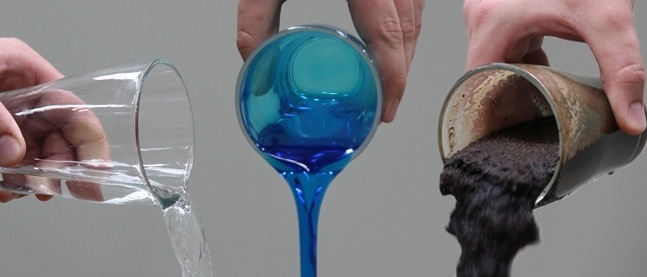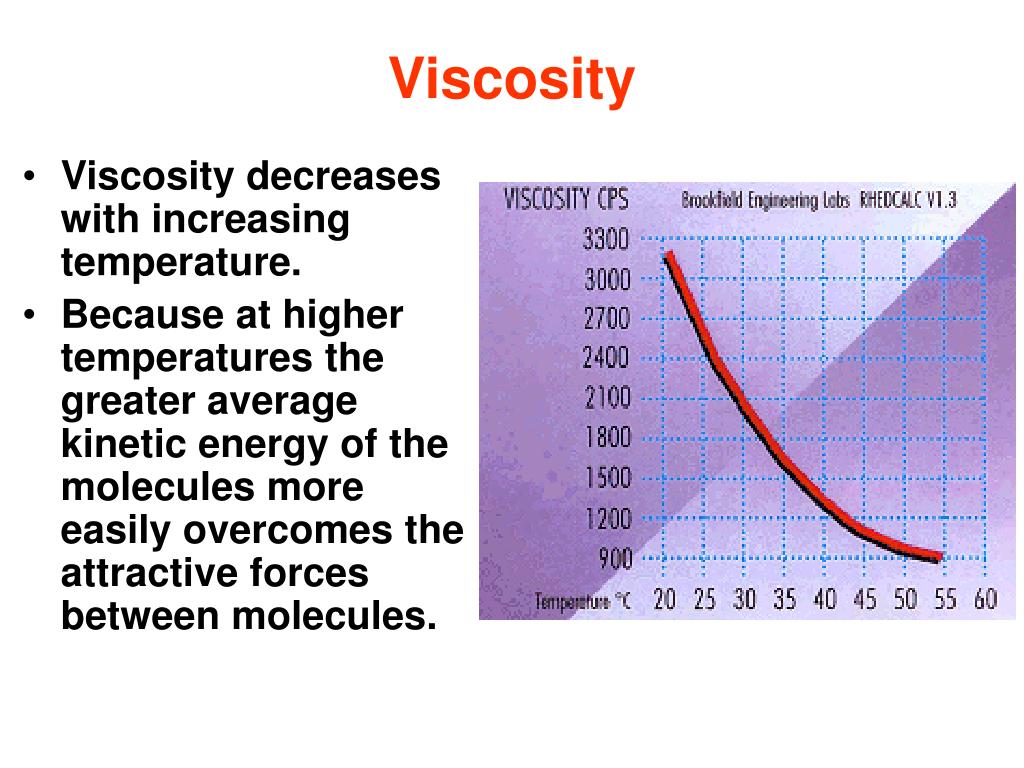
Water, gasoline, and other liquids that flow freely have a low viscosity.

But most importantly, highly viscous lava is associated with explosive eruptions and dangerous pyroclastic flows. The viscosity of a liquid is a measure of its resistance to flow. Viscous lava will trap pockets of gas within the rock, and not let them pop as bubbles on the surface. Viscosity is a measure of a fluids resistance to flow.A fluid with high viscosity resists motion because its molecular makeup due to internal friction Many variables can affect the. The variations of air and water as a function of the temperature at atmospheric pressure are plotted in Figures 1.8 and 1.9. For isothermal flow, the viscosity can be considered constant in many cases. It can also clog up the volcanic vent and form blocks that resist the flow of lava. The absolute viscosity of many fluids relatively doesn't change with the pressure but very sensitive to temperature. The viscosity changes with temperature to. At a molecular level, viscosity is a result of friction between molecules in a. A higher viscosity implies a slower flow and a thicker fluid. Water, for example, has a lower viscosity than molasses and flows more freely. Instead of rivers of lava, you can get crumbling piles of rock flowing down hill. Viscosity is simply the resistance of a fluid to flow. When lava has a high viscosity, it’s very thick and doesn’t flow very well at all. Classic examples of shield volcanoes are Mauna Kea and Mauna Loa in Hawaii, as well as Olympus Mons on Mars. Viscosity quantifies the internal frictional force between adjacent layers of fluid that are in relative motion. For liquids, it corresponds to the informal concept of 'thickness': for example, syrup has a higher viscosity than water. And over time, volcanoes made from low lava viscosity are wide and have a shallow slope these are known as shield volcanoes. The viscosity of a fluid is a measure of its resistance to deformation at a given rate. You can also get bubbles of lava filled with volcanic gasses that burble and pop on the surface of the lava.

This creates the classic rivers of lava, with channels, puddles and fountains. Examples of high viscosity substances include honey, molasses, pudding, ketchup, and shampoo, while substances with low viscosity include water, rubbing alcohol. The greater the resistance to flow, the higher the viscosity, so in the previous example, the syrup has a higher viscosity than water. When lava has low viscosity, it can flow very easily over long distances. Many thickeners form weakly cohesive colloidal structures, which can exist as solutions, suspensions or gels when dissolved or dispersed in a suitable liquid medium. Even though lava is 100,000 times more viscous than water, it can still flow great distances. This is why the terms thick (concentrated and high viscosity) and thin (dilute and low viscosity) are used as qualitative descriptions of the viscosity of liquid systems.

And the lava viscosity defines the size and shape of a volcano. You can measure lava in terms of viscosity as well. Water has low viscosity, while corn syrup, for example, is highly viscous. If the liquid molecules are strongly attracted to the tube molecules, the liquid creeps up the inside of the tube until the weight of the liquid and the adhesive forces are in balance.When it comes to liquids, viscosity is a measurement of how thick or syrupy it is.


 0 kommentar(er)
0 kommentar(er)
